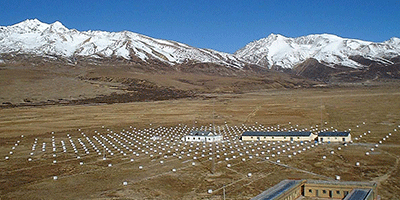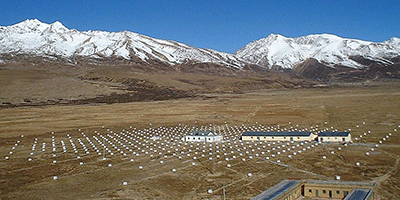Catching Rays in the Sun’s Shadow
For a cosmic-ray detector, the Sun is a dark spot in the sky. That’s because the Sun blocks the path of high-energy particles coming from outside the solar system. However, the lines of the Sun’s shadow can be blurred by deflections in the Sun’s magnetic field, as confirmed for the first time by a high-altitude cosmic-ray detector in Tibet. As described in Physical Review Letters, cosmic rays offer a unique probe of the hot, million-kilometer-thick corona that surrounds the Sun.
The Sun’s magnetic field is well characterized at large distances from the Sun, where the field lines are carried outward by the solar wind. But little is known about the magnetic field inside the corona—the outer halo of plasma where the solar wind originates. One commonly used model assumes that the coronal field is a simple extrapolation of the magnetic potential on the Sun’s surface. A more sophisticated model incorporates the effect of sheets of electric current believed to flow through the corona.
To help distinguish these two models, the Tibet Air Shower Gamma (AS ) Collaboration has studied cosmic rays coming from the direction of the Sun. The detector array observes the particle showers that result when a high-energy (around tera-electron-volt) cosmic ray hits the atmosphere. The researchers analyzed data from 1996 to 2009 and found the Sun shadow became less pronounced, i.e., around less dark, when solar activity and the Sun’s magnetic field were at or near maximum. The implication is that charged cosmic rays passing through the corona are deflected towards the Earth at a higher rate during solar maximum. The team ran simulations using the two main models, and only the current sheet model provided a good fit to the data. – Michael Schirber





